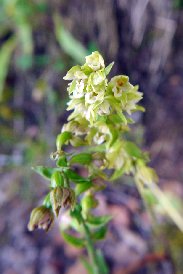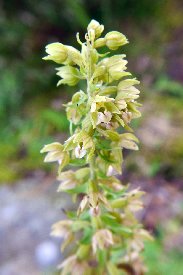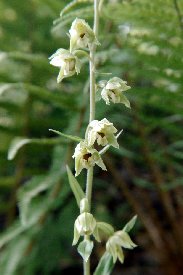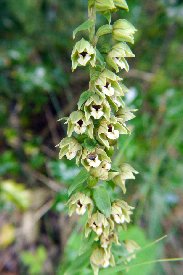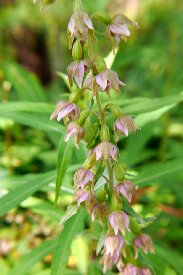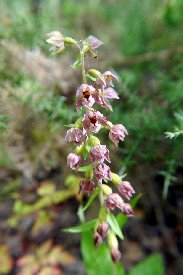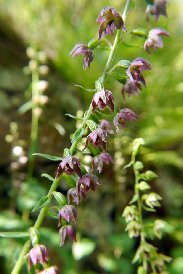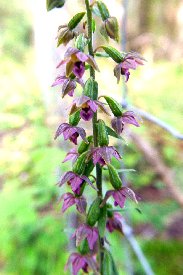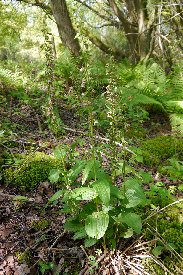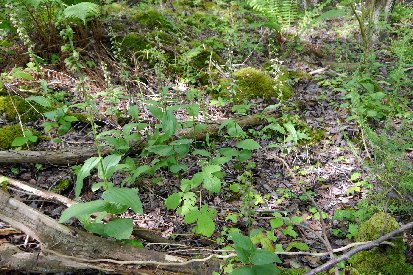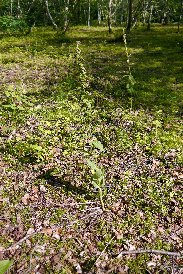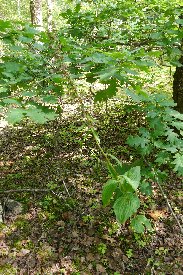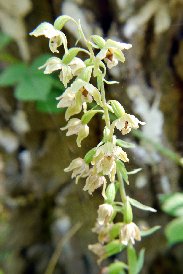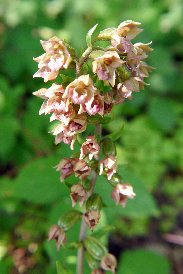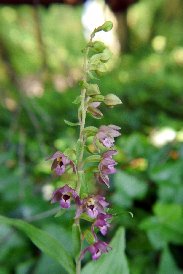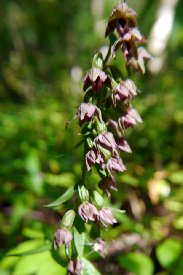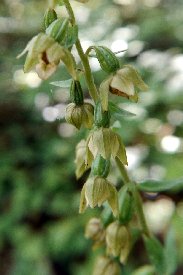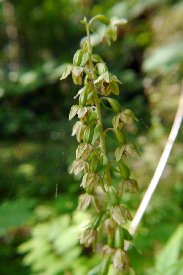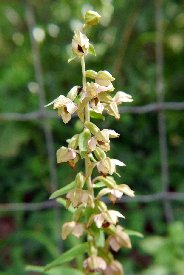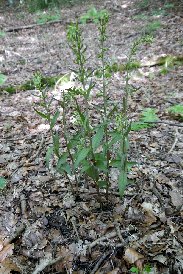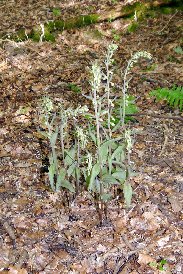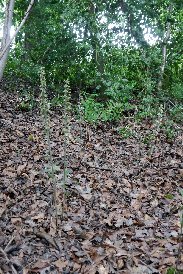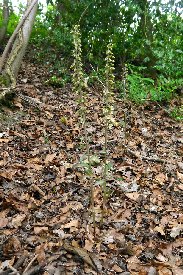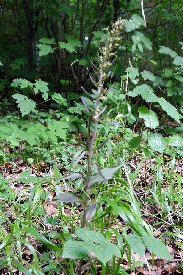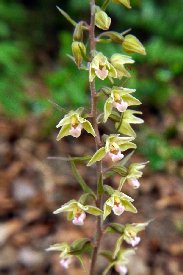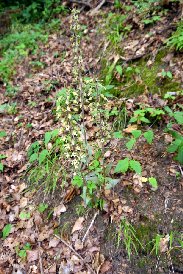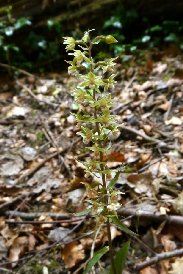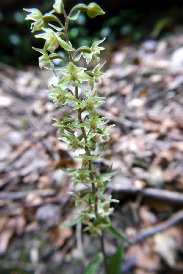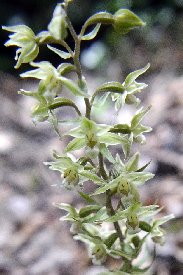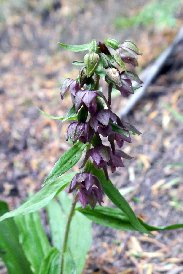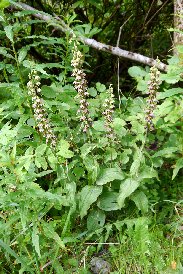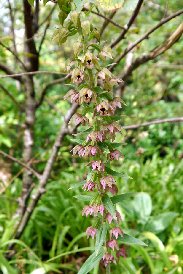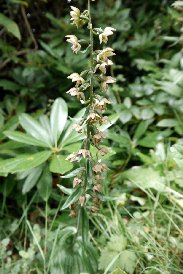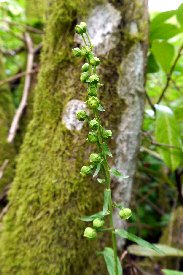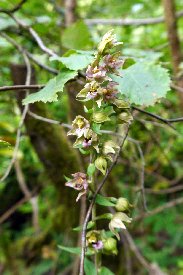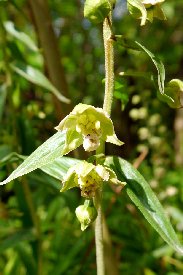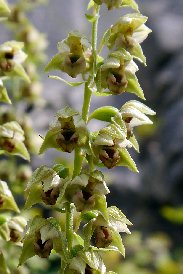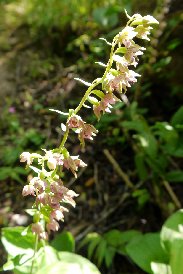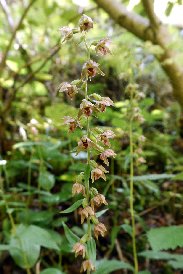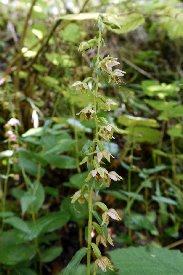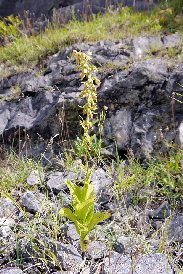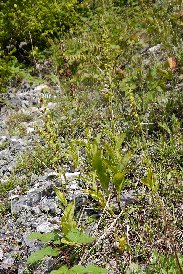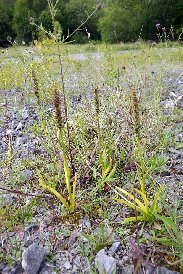|
|
||||||||||||||||||
|
|
||||||||||||||||||
 |
|
Minera Lead Mines 2nd August 2019 (SJ2751450929) What a change. Instead of having for miles to roam for miles to see a helleborine, we come here and find ourselves surrounded by them. Down by the road to World's End I could stand on one spot and count 200 Broad-leaved Helleborine spikes before giving up. that patch of woodland houses some fine clumps.
Another favourite haunt of the Broad-leaved Helleborine. I am struck by the number of really quite tall specimens growing under the birches close to the entrance. They must be 70cm tall or more. Again a great range of colour from very pale, through rosy-pink and purple, to deep magenta. Theree is a repeat of a phenomenon I have noticed here before. A number of plants not only have quite pendulous flowers, but also seem to show swelling of the ovaries very early in the flowering period. I am NOT tempted to suggest these may represent a hybrid with Green-flowered Helleborine, even though this has been questioned previously from online photos. Yes. GFH do grow not far away, but the chance of this happening is so remote it must be considered improbable. However, perhaps there is tendency for some plants in this colony to auto-pollinate. .... and onto a cycle path by a retail estate just outside Chester. I had been told these were coming along nicely (many thanks for the tip off) and so it is time for a visit. There are only a few Broad-leaved Helleborines here and all are quite pale flowered, sittting along a wire fence. We are here perhaps week too early, but other things are planned. May of the Violet Helleborines are not really out yet, but these sites still always please. The roadside area is particularly good this year with some 62 spikes counted, Though I have scrambled along quite a slope to see a nice grouping. The clump that was seen last year has 10 spikes this year, which is down a bit. Different photography techniques can help photographing these in the low light. In fact the `raw' picture shows how, despite the size of the clump, it was easy for me to climb past it while searching for it. It will be a spectacular sight in 6-7 days I reckon. Those along the edge of the road still defy vehicles and walkers, with one just by where we parked up having very violet leaf markings. Across the other side in the woods the number of spikes seem fewer this year, but we do come across one fine specimen that virtually lacks any pigments. It looks almost like it is made from sugar! Nant y Frith 8th August 2019 (SJ26395392) I will say it again. If want to see Broad-leaved Helleborines then this place just has to be on your agenda. The flower colours vary from deathly pale to deep purple, they grow in stately groups, and have a few that tower head and shoulders above the pack. Just remember that they flower here up to two weeks later than elsewhere locally. Again we see those plants with the grotesque reproductive structures, where the column is present in multiple copies, having arisen from a large globular bud. We didn't see these in 2018, but their reappearance suggests that this abnormality is coded into the genetic structure, rather than being the result of some viral or other infection. I wonser if they ever set seed, and if it will be viable? Minera Quarry 13th August 2019 (SJ 25156 52172) No real reason to come here again so late in the orchid year, so it is no surprise that the majority of the Broad-leaved Helleborines are going over. In fact we missed the chance to see them at their best whilst wasting good orchid-time chasing across Gloucestershire for minimal reward. Anyway, there were still some in flower, and like other like local sites there was a range of colours on display. What was evident was that below the quarry face there was many more than I have seen before; and they are noticeably different in that the leaves are more of a yellow green, and they are more clustered towards the base. Neerlandica like do I hear? I await a paper that will apparently show genetic differences between regular E. helleborine and neerlandica in South Wales. Obviously these are not the variant so is this leaf clustering an eco-type adaptation to growing in full sun?
|
|
|
||||||||||||||
